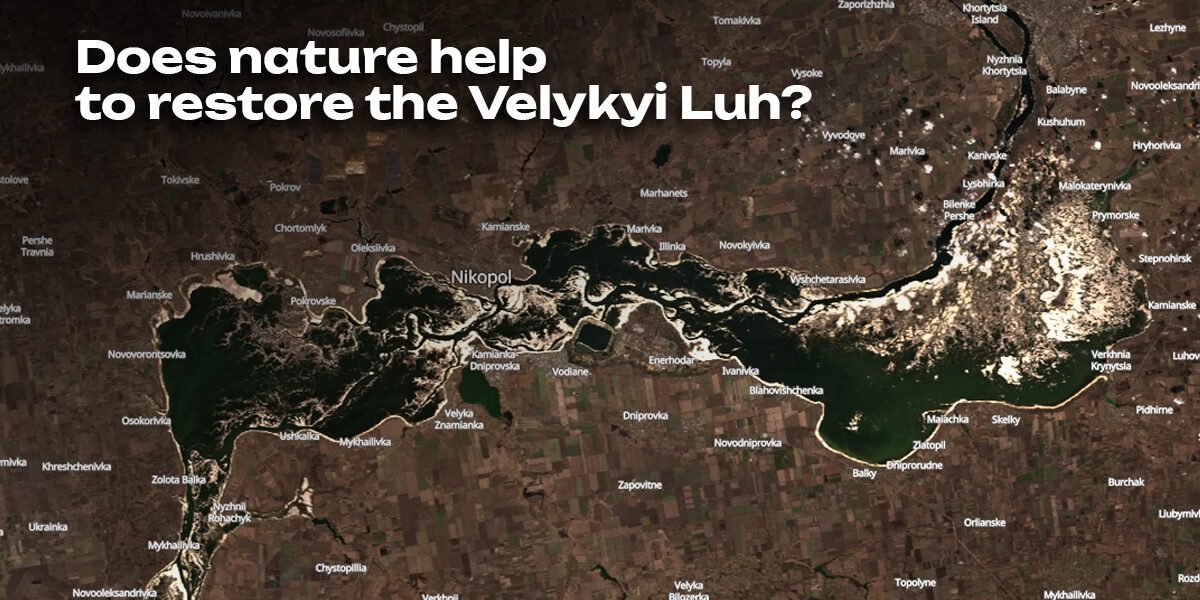Velykyi Luh (that means a great meadow) was artificially flooded by the communist authorities during the construction of the Kakhovka Reservoir in the 1950s. This is one of the most important natural and historical landscapes of Ukraine. After the Russians blew up the Kakhovka HPS dam, this territory ceased to be a reservoir.
Currently, many mass-media are spreading the news that “water returns to the Kakhovka Reservoir” due to spring flooding. We cannot agree with that wording, but it is the great news, indeed! The reservoir doesn’t exist anymore therefore a real spring flooding takes place at the Velykyi Luh for the first time in more than 90 years.
It is not only a beautiful natural phenomenon, but also a vital event for biodiversity. Water will moisten the territory of the Dnipro floodplain for a long time, where natural ecosystems have been recovering since last year. Therefore, the area of the former reservoir doesn’t turn into a desert. We have analyzed some data to find out what ecosystems occupied the territory of the Velykyi Luh before the construction of the reservoir. 65% of them were swampy and overwetted areas. So, it is not surprising that the former hydrological regime of the floodplain begins to recover.
There is other good news:
First, flooding is not only “a lot of water”, but also a large amount of organic matter carried by spring waters. The soils of the floodplain are enriched, and there will be much more resources for the restoration of vegetation already this year.
Second, the expeditions to the bottom of the former reservoir conducted last year showed that not only local plant species but also invasive ones began to grow on the area freed from water. However, these species are mostly drought-tolerant (they spread easily in dry conditions). Therefore, a significant moistening of the Dnipro floodplain will help to reduce the number of alien species and increase the chances for the local flora of the river valley.
Third, flooding is important for the spread of plant seeds, and the migration of water animals, when water flows from the main riverbed and connects separated ponds. Silt and sandy sediments create conditions for seed germination and plant establishment as well as important areas for feeding waterbirds.







